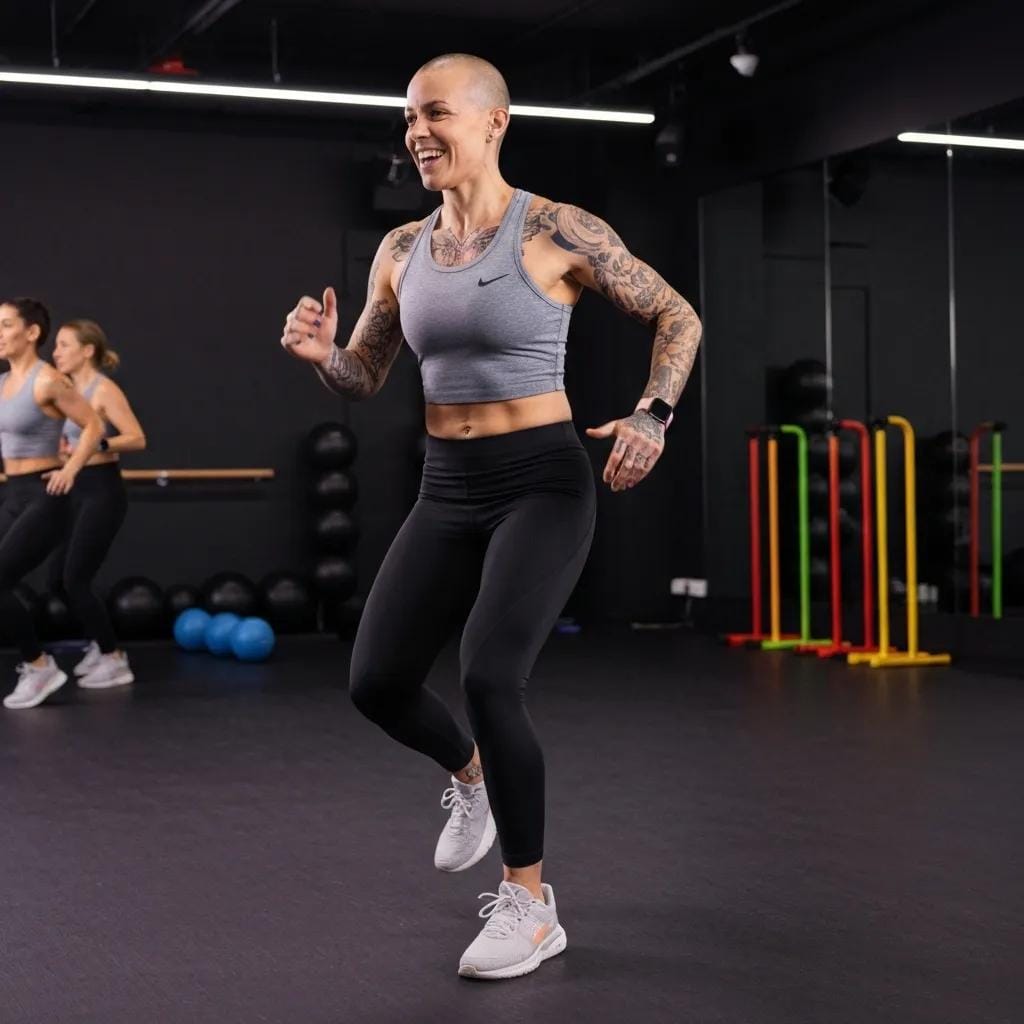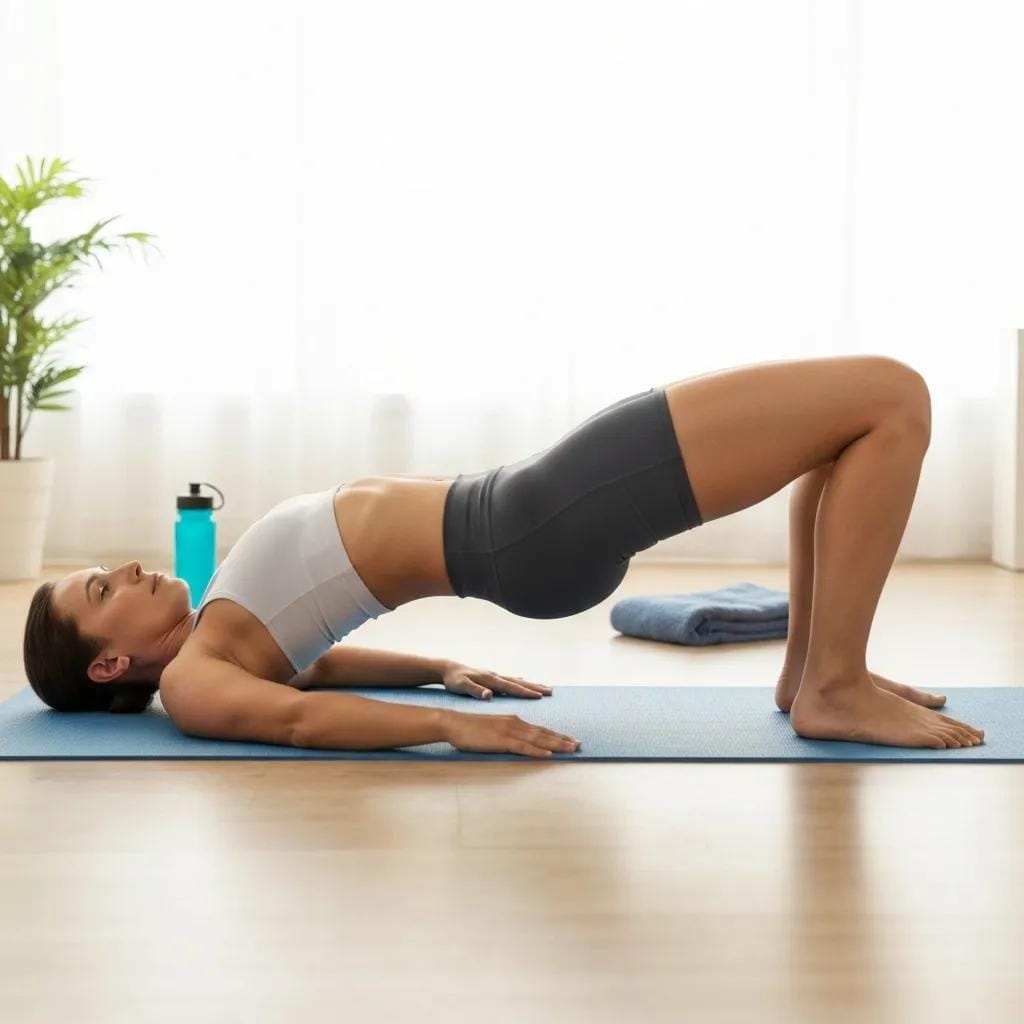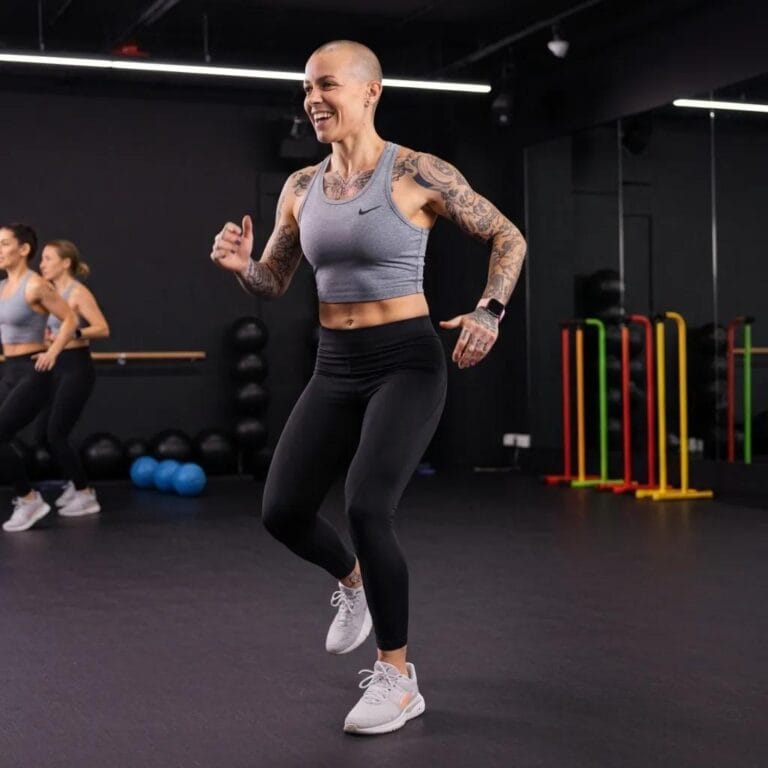
Strengthening Exercises for Fast Injury Recovery: Effective Rehabilitation and Physical Therapy Techniques
Recovering from an injury challenges your strength, mobility, and confidence—but targeted strengthening exercises can accelerate healing by stimulating muscle repair, improving joint stability, and reducing pain. In this guide on strengthening exercises for injury recovery, we’ll explore the key phases of rehabilitation, specific lower-body, upper-body, and core protocols, specialized services that enhance outcomes, injury-prevention strategies, and when to seek professional care. Whether you’re rehabbing a sprained ankle, recovering from rotator-cuff surgery, or aiming to restore back stability, these evidence-based techniques and compassionate insights will empower your journey toward faster, lasting recovery.
What Are the Key Phases of Injury Recovery and How Does Strengthening Help?
Injury recovery unfolds in three distinct phases—acute, sub-acute, and remodeling—each guided by specific biological processes where strengthening exercises support tissue repair, reduce inflammation, and reestablish function for long-term resilience.
| Phase | Primary Focus | Strengthening Benefit |
|---|---|---|
| Acute | Inflammation control and rest | Gentle isometric holds reduce pain and protect tissue |
| Sub-acute | Tissue regeneration and mobility | Progressive loading stimulates collagen alignment |
| Remodeling | Strength and function restoration | Gradual overload rebuilds strength and joint stability |
This phased approach ensures that each exercise progression respects the body’s natural healing timeline and lays the groundwork for restoring full movement.
Phases of Rehabilitation after Injury: An Evidence-based Literature Review
This literature review outlines the distinct phases of rehabilitation following an injury, advocating for an evidence-based approach to management. It highlights the progression from initial protection and early mobilization to controlled strengthening, emphasizing the importance of aligning exercise types with the body’s natural healing timeline to ensure complete recovery and prevent re-injury.
This review provides foundational support for the article’s explanation of the key phases of injury recovery (acute, sub-acute, and remodeling) and how strengthening exercises are integrated into each phase.
What Happens During the Acute, Sub-Acute, and Remodeling Phases?
The acute phase begins immediately after injury, marked by swelling and protective muscle guarding. During this time, low-intensity isometric exercises promote circulation without overstressing damaged fibers, preparing the area for renewed activity. Transitioning into the sub-acute phase, controlled movement and light resistance facilitate collagen realignment and reduce stiffness. Finally, the remodeling phase emphasizes progressive strengthening and functional tasks to restore load tolerance and prevent future injury.
Why Is Strengthening Crucial in Each Phase of Recovery?
Strengthening exercises activate muscle fibers, enhance blood flow to injured regions, and stimulate mechanoreceptors that regulate tissue repair. In the acute phase, safe muscle engagement limits atrophy; in the sub-acute phase, resistance training directs scar tissue alignment; and in the remodeling phase, progressive overload rebuilds force capacity and joint control for sustainable recovery.
How Does Physical Therapy Support Faster Healing and Mobility Restoration?
Physical therapy integrates manual techniques, tailored exercise prescriptions, and expert monitoring to optimize each recovery phase. Hands-on mobilization reduces adhesions, targeted strengthening programs prevent compensatory patterns, and ongoing assessments adjust intensity to match healing progress, resulting in faster pain reduction, improved range of motion, and a smoother return to daily activities.
Which Strengthening Exercises Are Best for Lower Body Injury Rehabilitation?

Lower body rehabilitation focuses on the knee, ankle, hip, and gluteal muscles to rebuild stability, balance, and strength that underpin walking, running, and functional tasks.
Role of strengthening exercises in management and prevention of overuse sports injuries of lower extremity: a systematic review
This systematic review concluded that strength training plays a fundamental role in the management and prevention of overuse injuries, particularly in the lower extremity of athletes. It enhances muscle performance, fitness level, speed, and agility, while also decreasing pain and facilitating early recovery from injury.
This research directly supports the article’s recommendations for strengthening exercises in lower body injury rehabilitation and its emphasis on injury prevention strategies.
What Are the Most Effective Knee Injury Strengthening Exercises?
Knee injury rehabilitation relies on quadriceps and hamstring activation to stabilize the joint, support patellar tracking, and absorb load.
How to Perform Quad Sets, Straight Leg Raises, and Hamstring Curls Safely
Begin each session with quad sets—ten-second quadriceps contractions against a flat surface—to reduce swelling and maintain muscle tone. Progress to straight leg raises lying supine, lifting the leg five inches off the table with knee fully extended for three sets of 10. Introduce hamstring curls with light ankle weights or resistance bands, bending the knee to 90° while keeping hips stable, to strengthen posterior chain support.
What At-Home Exercises Aid Ankle Sprain Recovery?
Home-based ankle routines rebuild stability, proprioception, and range of motion after a sprain through controlled movements and resistance. pediatric physical therapy
Step-by-Step Guide to Calf Raises, Ankle Alphabet, and Resistance Band Dorsiflexion
- Calf Raises: Stand on both feet and slowly rise onto toes, hold two seconds, then lower for 3 sets of 15.
- Ankle Alphabet: Seated with leg extended, trace the alphabet with toes to enhance mobility in all directions.
- Resistance Band Dorsiflexion: Anchor band to fixed support, loop around forefoot, and pull toes toward you for 3 sets of 12 to strengthen anterior tibialis.
These exercises gradually restore dorsiflexion, plantarflexion, inversion, and eversion control for safe ambulation.
How Can Hip and Glute Strengthening Improve Lower Body Recovery?
Targeting hip abductors and glutes enhances pelvic stability, reduces undue stress on the knee and ankle, and supports functional movement patterns.
Benefits and Techniques for Glute Bridges, Bird Dog, and Clamshells
- Glute Bridges: Lying supine with knees bent, lift hips until body forms a straight line from shoulders to knees, focusing on glute contraction.
- Bird Dog: On hands and knees, extend opposite arm and leg while maintaining a neutral spine, challenging core and hip stability.
- Clamshells: Side-lying with hips bent to 45°, lift the top knee while keeping feet together to activate glute medius.
Closing each session with progressive resistance during these movements fosters hip joint integrity and prevents compensation during daily activities.
What Are the Best Physical Therapy Exercises for Shoulder and Upper Body Pain?
Upper body recovery emphasizes rotator-cuff integrity, scapular stability, and forearm strength to alleviate pain and restore functional reach.
Which Strengthening Exercises Help Rotator Cuff Injury Recovery?
Rotator cuff rehabilitation hinges on balanced strengthening of internal and external rotators along with scapular stabilizers to maintain glenohumeral alignment.
How to Do Pendulum Swings, External/Internal Rotations, and Scapular Squeezes
- Pendulum Swings: Lean forward, allow the injured arm to hang, and gently swing in small circles for one minute to promote joint lubrication.
- External/Internal Rotations: Lying on the side or standing with a light band, pull the forearm away from or toward the body at a 90° elbow angle for 3 sets of 15 reps.
- Scapular Squeezes: Standing tall, retract shoulder blades together without shrugging to strengthen mid-trapezius and rhomboids.
Consistent practice of these movements reduces impingement, improves scapulothoracic rhythm, and rebuilds rotator cuff strength.
What Exercises Relieve Elbow and Wrist Pain During Rehabilitation?
Forearm and wrist protocols focus on isometric holds, eccentric loading, and band resistance to alleviate tendon overload and promote joint stability.
Isometric Wrist Extensions and Resistance Band Pull-Aparts Explained
- Isometric Wrist Extensions: Rest the forearm on a table with the hand over the edge, press the back of the hand upward against light resistance and hold for 10 seconds.
- Resistance Band Pull-Aparts: Grasp a band at shoulder width and pull apart until arms align with shoulders, engaging the posterior shoulder and upper back for 3 sets of 12.
These exercises target extensor tendons and scapular stabilizers to diminish lateral or medial epicondylitis symptoms and reinforce wrist control.
How Does Core Strengthening Support Back Injury Recovery and Prevention?

Core rehabilitation builds trunk stability, distributes loads evenly across the spine, and prevents excessive lumbar strain through targeted muscle engagement. Our specialties
What Are Effective Back Pain Relief Exercises for Faster Recovery?
Posterior chain activation increases support for vertebral segments, reducing pain and promoting functional movement patterns. Our pediatric physical therapy can enhance recovery and functionality.
Bird Dog, Pelvic Lifts, and Planks: Proper Form and Benefits
- Bird Dog: Maintain a neutral spine while extending opposite arm and leg, holding for five seconds to engage multifidus and paraspinals.
- Pelvic Lifts: Lie supine and lift hips with controlled engagement of glutes and lower back for three sets of 10.
- Planks: Support body on forearms and toes, keeping a straight line from shoulders to heels for 30–60 seconds to recruit the entire core cylinder.
Each exercise enhances lumbar stability, improves posture, and accelerates safe return to activity.
How Can Abdominal Muscle Strain Be Rehabilitated with Core Exercises?
Targeted transverse abdominis and oblique activation rebuilds intra-abdominal pressure, supporting healing of strained abdominal muscles.
Side Planks and Paloff Press Techniques for Core Stability
- Side Planks: Lie on one side, prop on forearm, lift hips and hold for 20–40 seconds to strengthen lateral core musculature.
- Paloff Press: Stand perpendicular to a band anchor, press the handle away from chest, resisting rotation to engage deep core stabilizers.
These drills enhance tissue repair, minimize shear forces, and fortify the core against future strains.
What Specialized Rehabilitation Services Enhance Fast Injury Recovery?
Alongside exercise protocols, specialized services offer advanced modalities, personalized oversight, and innovative delivery methods to optimize outcomes.
How Does Sports Injury Physical Therapy Accelerate Healing?
Sports injury therapy combines manual soft-tissue techniques, neuromuscular retraining, and performance-based progressions to return athletes to peak function swiftly while minimizing re-injury risk.
What Are the Benefits of Post-Operative Rehabilitation Programs?
Post-operative rehabilitation delivers controlled mobilization, progressive loading schedules, and scar-management techniques that expedite tissue remodeling, preserve joint integrity, and restore movement patterns after surgery.
How Is Pediatric Physical Therapy Tailored for Children’s Injury Recovery?
Pediatric therapy adapts strengthening exercises into playful, age-appropriate formats, incorporates growth considerations, and engages caregivers to build confidence, motor skills, and adherence in young patients.
Can Telehealth Physical Therapy Support Strengthening Exercises Remotely?
Telehealth services offer real-time video instruction, exercise monitoring, and virtual education to guide safe home programs, increase accessibility, and maintain professional oversight for remote rehabilitation.
What Injury Prevention Strategies Complement Strengthening Exercises?
Integrating dynamic warm-ups, proprioceptive drills, and ergonomic adjustments reduces future injury risk by enhancing tissue readiness, balance, and daily posture.
How Do Dynamic Stretching and Warm-Ups Reduce Injury Risk?
Dynamic warm-ups elevate muscle temperature, increase joint lubrication, and activate neuromuscular pathways, preparing the body for the demands of strengthening exercises and reducing strain.
What Role Does Balance and Proprioception Training Play in Avoiding Re-Injury?
Proprioceptive drills such as single-leg stands on unstable surfaces train mechanoreceptors around joints, improving reflexive stabilization and adaptability during unexpected perturbations.
How Can Ergonomics Help Maintain Long-Term Joint and Muscle Health?
Ergonomic assessments adjust workstations, sleeping positions, and carrying habits to minimize undue stress, maintain neutral postures, and support the long-term benefits of ongoing strengthening routines.
When Should You Seek Professional Physical Therapy for Injury Recovery?
Recognizing red-flag symptoms, timeline setbacks, and functional limitations can guide the decision to engage specialized care for optimal recovery.
What Are the Signs That Indicate the Need for Expert Rehabilitation?
Persisting pain beyond expected healing windows, recurring swelling, significant range-of-motion loss, or compensatory movement patterns signal that professional evaluation and tailored interventions are necessary.
How Do Personalized Treatment Plans Improve Recovery Speed and Outcomes?
Customized plans assess individual injury characteristics, lifestyle demands, and recovery goals—then integrate manual therapy, progressive strengthening, and education to expedite healing, prevent setbacks, and restore confidence.
How to Schedule an Appointment with a Physical Therapist at rhw-indy.com
To begin a targeted rehabilitation program with expert guidance, visit rhw-indy.com and complete the request form for a consultation. Our team will tailor a fast-tracking strengthening plan to your unique recovery needs.
Recovering strength after injury relies on structured phases, targeted exercises, and professional support to rebuild muscle, stabilize joints, and restore function. By integrating lower-body, upper-body, and core protocols alongside specialized rehabilitation services and prevention strategies, you establish a foundation for lasting resilience. Early recognition of recovery plateaus and timely consultation with licensed physical therapists ensures optimal progress and reduces chronic pain risk. Embrace these strengthening techniques to accelerate healing, regain confidence, and return to your active lifestyle.
Frequently Asked Questions
What types of injuries benefit most from strengthening exercises?
Strengthening exercises are particularly beneficial for a wide range of injuries, including sprains, strains, and post-surgical recovery. Common conditions such as knee injuries, rotator cuff tears, and lower back pain can see significant improvements through targeted strengthening. These exercises help restore muscle function, enhance joint stability, and promote overall recovery. Additionally, they play a crucial role in preventing future injuries by improving strength and flexibility in the affected areas.
How often should I perform strengthening exercises during recovery?
The frequency of strengthening exercises during recovery typically depends on the phase of rehabilitation and the specific injury. Generally, it is recommended to perform these exercises 2 to 3 times a week, allowing for rest days in between to facilitate muscle recovery. As strength improves, the intensity and frequency may be adjusted. Always consult with a healthcare professional or physical therapist to create a personalized schedule that aligns with your recovery goals.
Can I continue strengthening exercises if I experience pain?
While some discomfort is normal during rehabilitation, sharp or persistent pain is a signal to stop and reassess your approach. It’s essential to differentiate between muscle soreness and pain that indicates potential injury. If you experience pain, consult with a physical therapist to modify your exercise routine. They can help adjust the intensity or type of exercises to ensure you continue to strengthen safely without risking further injury.
What role does nutrition play in injury recovery alongside strengthening exercises?
Nutrition plays a vital role in injury recovery, complementing the effects of strengthening exercises. A balanced diet rich in protein, vitamins, and minerals supports muscle repair and tissue healing. Nutrients like vitamin C, zinc, and omega-3 fatty acids can reduce inflammation and promote recovery. Staying hydrated is also crucial, as it aids in nutrient transport and muscle function. Consider consulting a nutritionist for tailored dietary advice to enhance your recovery process.
Are there specific warm-up routines recommended before strengthening exercises?
Yes, a proper warm-up is essential before engaging in strengthening exercises to prepare your muscles and joints. Dynamic stretches, such as leg swings, arm circles, and torso twists, can increase blood flow and flexibility. Additionally, light aerobic activities like brisk walking or cycling for 5-10 minutes can elevate your heart rate and warm up your body. A well-structured warm-up reduces the risk of injury and enhances performance during your strengthening routine.
How can I track my progress during rehabilitation?
Tracking progress during rehabilitation can be achieved through various methods. Keeping a journal to log exercises, repetitions, and any pain levels can provide insights into your recovery journey. Additionally, regular assessments with a physical therapist can help evaluate strength improvements and range of motion. Using tools like progress photos or strength tests can also visually demonstrate your advancements, motivating you to stay committed to your rehabilitation plan.
What should I do if I feel my recovery is plateauing?
If you feel your recovery is plateauing, it’s important to reassess your rehabilitation strategy. Consult with your physical therapist to evaluate your current exercise regimen and make necessary adjustments. They may introduce new exercises, increase resistance, or modify your routine to stimulate further progress. Additionally, incorporating cross-training activities or varying your strengthening exercises can help overcome plateaus and enhance overall recovery outcomes.

